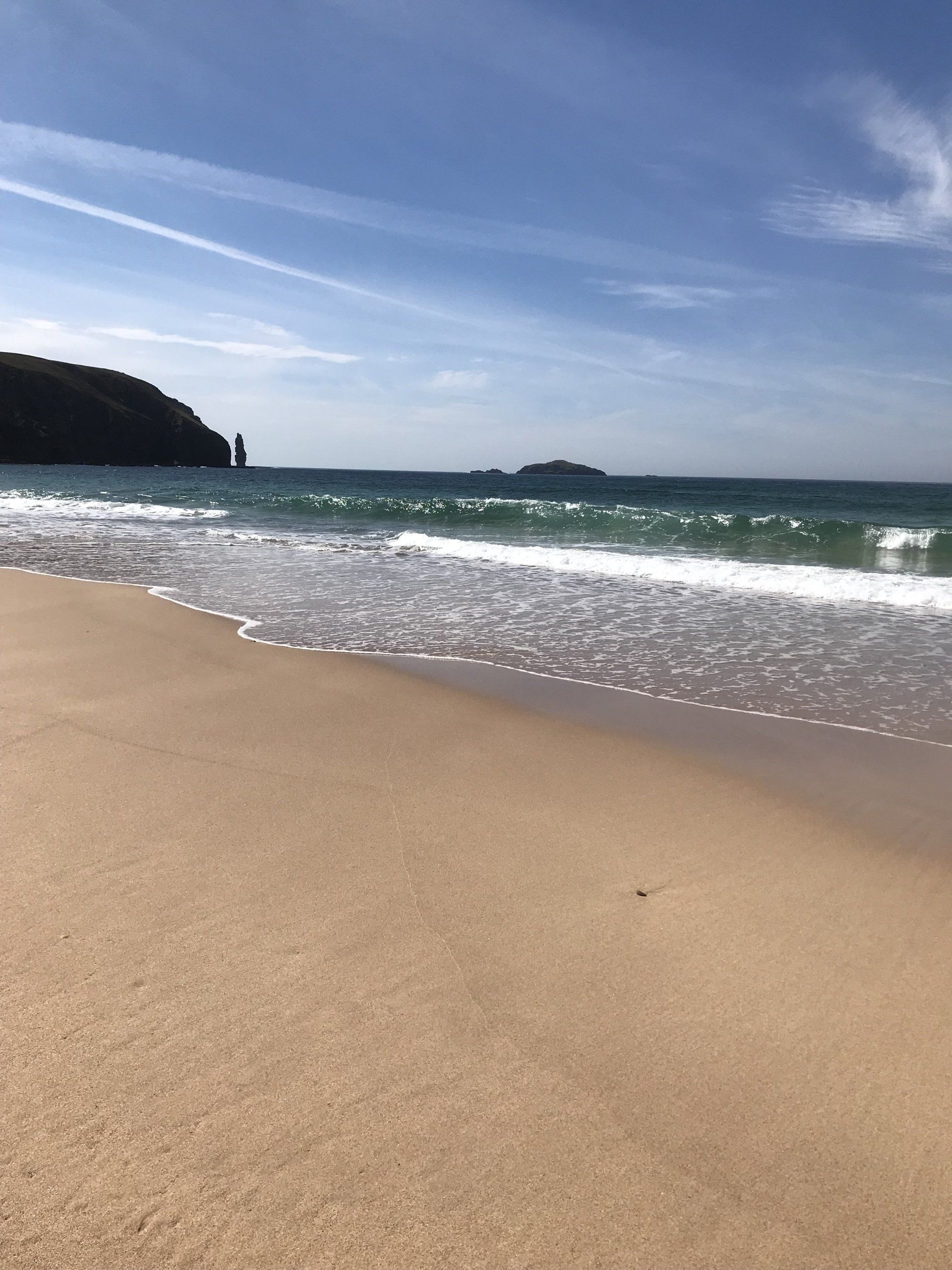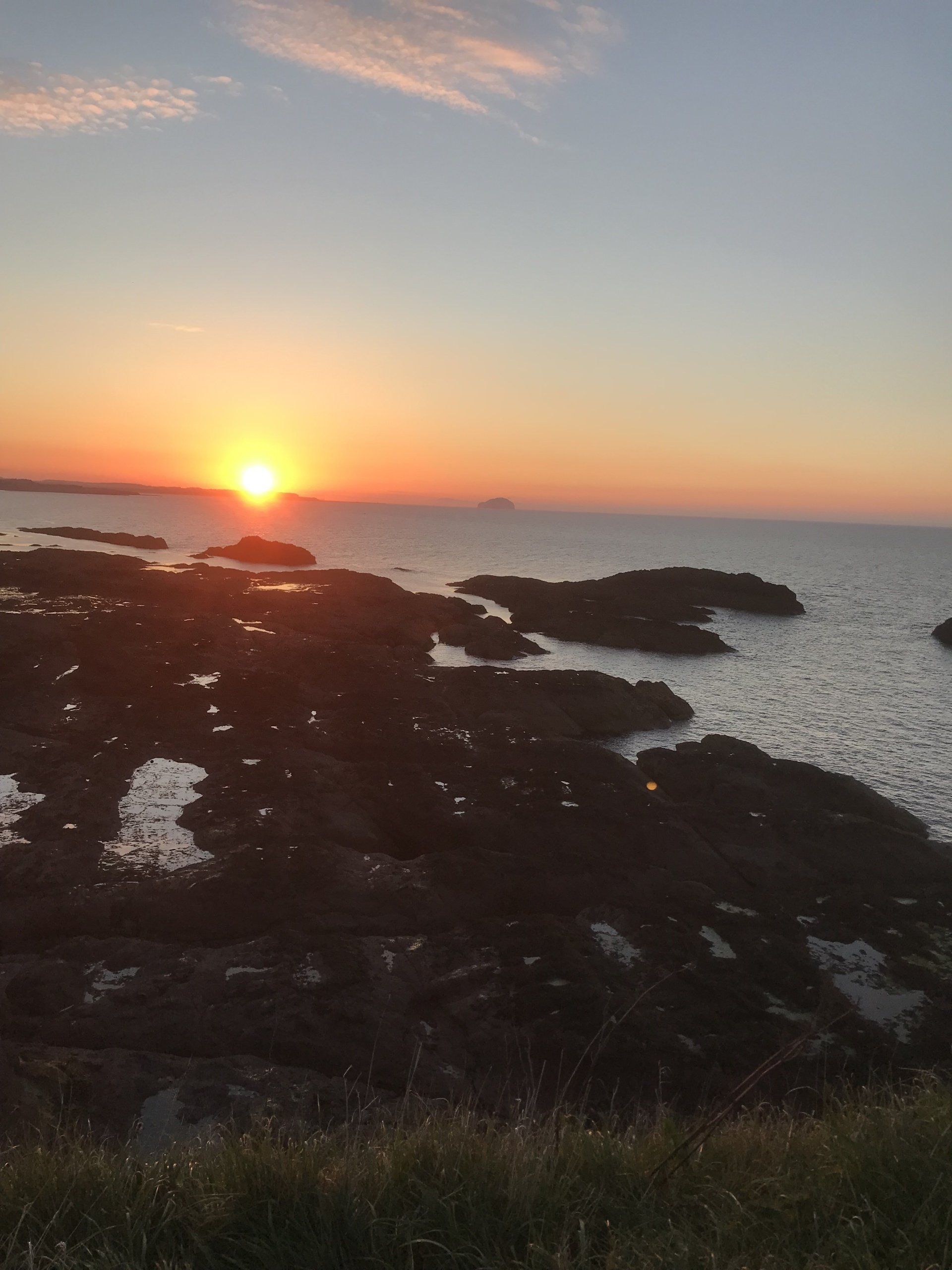Interconnected Coastal and Environmental Threads Across Scotland
‘When We Try To Pick Out Anything By Itself, We Find It Hitched to Everything Else In The Universe’ John Muir (1911)
‘In Every Walk Within Nature One Receives Far More Than He Seeks’ Muir Woods National Monument Plaque at Park Entrance, near San Francisco
Seannabhat - ‘Sand’ and ‘Vatn’ - Sand and Water
Am Buachnaille - The Herdsman
Sandwood Bay is undoubtedly one of the most beautiful in Scotland. It is flanked by rolling dunes and lashed by gales for much of the year. Vikings beached their longships here over a millennium ago. In 1266, the Norwegians agreed the sale of the proximate Western Isles to the Scottish crown on the condition that the kings of Scotland would respect their hold on Orkney and Shetland.
The four mile walk from Blairmore to Sandwood Bay takes you across an area covering 4,703 ha (11,621 acres) comprising wild and crofted land just ten miles from Cape Wrath on the north west tip of Scotland. Sandwood Bay, Sheigra, Oldshorebeg and Oldshoremore machair as well as the coastal cliffs are designated a Special Area of Conservation.
Machair (Gaelic for a low-lying fertile plain) is one of Europe’s rarest habitats. Unique to the north western fringes of Scotland and Ireland, machair can be seen behind most of the dune systems on Sandwood. The machair at Sandwood contain more than 200 different species of plant, including eight orchids.
The peatlands of Sandwood are among the most important wildlife habitats in north west Scotland. Deep layers of peat take thousands of years to form and provide a home for a range of plants and animals that have adapted to the acidic, waterlogged conditions. This blanket bog provides a nesting ground for birds in the autumn including great northern divers, barnacle geese and golden plovers as well as redwings, fieldfares, arctic skua and fulmer petrals. The area is also home to otters, stoats, badgers and weasels.
Bordered by rugged cliffs, the area is incredible with magnificent sands and dune systems. A landmark sea stack, Am Buachnaille (the herdsman), a testament to glacial times, lies at the western edge of the one mile Sandwood Bay. The vistas which open up around the bay are truly remarkable and well worth the eight mile round walk which fosters a real connection with nature in its raw state featuring wide open spaces and the sea stretching away to the horizon.
Sandwood Bay is currently the most northerly of seven locations in Scotland, and one in England, comprising wild and untamed places, which are protected and conserved by the John Muir Trust. The Trust acquired Sandwood in 1993 aiming to achieve a balance between the conservation needs of the area and the need for local crofters to retain ties to the landscape in which they live.
A few hundred miles to the south east lies Dunbar, the birthplace of John Muir (1838-1914). The coastline here is also remarkable, home to Belhaven Bay and the John Muir Country Park.
John Muir is often referred to as ‘the father of the national park’ in America where he emigrated to at the age of eleven. He was an influential Scottish-American. Muir was a naturalist author, environmental philosopher/unruly mystic, glaciologist and botanist and an early advocate for the preservation of wilderness land in America. As a young boy, Muir explored the East Lothian coastline and countryside.
In 1849, Muir’s family, who were akin to Calvin on steroids, emigrated to Wisconsin where they started a farm. When he was twenty two, Muir enrolled at the University of Wisconsin-Maddison where he studied botany and geology though did not formally graduate. Following an industrial accident which impaired his vision, Muir resolved to follow his dream of exploration and study of plants. In 1867, Muir undertook a 1,000 mile walk form Kentucky to Florida which he chronicled in his book ‘A Thousand-Mile Walk to the Gulf’. He subsequently settled in California where he married Louisa Strentzel in 1880 and went into business with his father-in-law managing the orchards of the family’s 2,600 acre farm in Martinez.
A naturalist author and close friend, Ralph Emerson, offered Muir a teaching position at Harvard. Muir declined, and as a sign of his underlying religious conviction later wrote ‘I never for a moment thought of giving up God’s big show for a mere profship’. Muir was convinced that glacial movement had sculpted many features of the Yosemite Valley in contrast to other prevailing views suggesting that earthquakes had played a key role.
Muir viewed nature as a great healer which revealed both the nature and mind of God. He experienced an intense emotional and spiritual response to nature in all its forms. His description of the Sequoia forests of California as ‘God’s first temples’ is indicative of the kind of pantheism that sustained him during his life. He understood his mission to be ‘saving the American soul from total surrender to materialism’. His activism helped to save Yosemite Valley, Sequoia National Park and other wilderness areas. In June 1889, the influential associate editor of ‘The Century’ magazine, Robert Johnson, camped with Muir in Tuolumne Meadows following which he agreed to use his influence to introduce a bill to the US Congress to make the Yosemite area into a national park. During September 1890, Congress passed a bill to enable this.
In early 1892, Professor Henry Senger contacted Muir with the idea of forming a local ‘alpine club’ for mountain lovers. The first meeting of the Sierra Club was held during May 1892 and Muir was elected President. The Sierra Club defended the interests of the Yosemite National Park and was active in the successful campaign to transfer the entire Park from State to Federal control. In 1903, Muir accompanied President Theodore Roosevelt on a visit to Yosemite. They camped in the back country and when they awoke the next morning they were covered in a light dusting of snow. During this trip, Muir convinced Roosevelt that the park should be protected by Federal Government rather than by State Government. Roosevelt later said ‘lying at night under those giant Sequoias was like lying in a temple built by no hand of man, a temple grander than any human architect could by any possibility build.’ In 1906, Congress transferred the Mariposa Grove and the Valley to the National Park. The Sierra Club now has a membership of around 3.8 million.
From a personal perspective, I discovered the interconnected nature of two Scottish landscapes - Sandwood and Dunbar - by chance during May 2019. The discovery of Muir’s birth town just a few days after a walk to Sandwood Bay and its connections with Muir, through the John Muir Trust, provided perspective on a pioneer environmentalist who recognised and valued wild landscapes. Muir’s defence of the natural world was uncompromising, characterised by landscape preservation and his belief that environmental destruction could only be stopped if people ‘learn(ed) to love and respect the land’. Preservation rather than conservation was his priority. This points to the wider global connectedness of the environmental movement highlighted in the challenges presented by climate change and finite resources on the one hand, and, consumer needs and aspiration on the other.
Placing yourself in the natural world lifts your spirits at any time of the year. It’s an ever present experience which needs to be repeated frequently to maintain the sense of oneness with nature. The beauty and truth found in nature point to the unattainable purity of the ‘earth first’ credo. For Muir, there was no middle way of sustainable development. Whilst his viewpoint didn’t win the day, even amongst environmental campaigners, the message to take pleasure in what remains of the natural world is hugely significant for the pursuit of personal well being and fulfilment.
David Usher
27 July 2020

